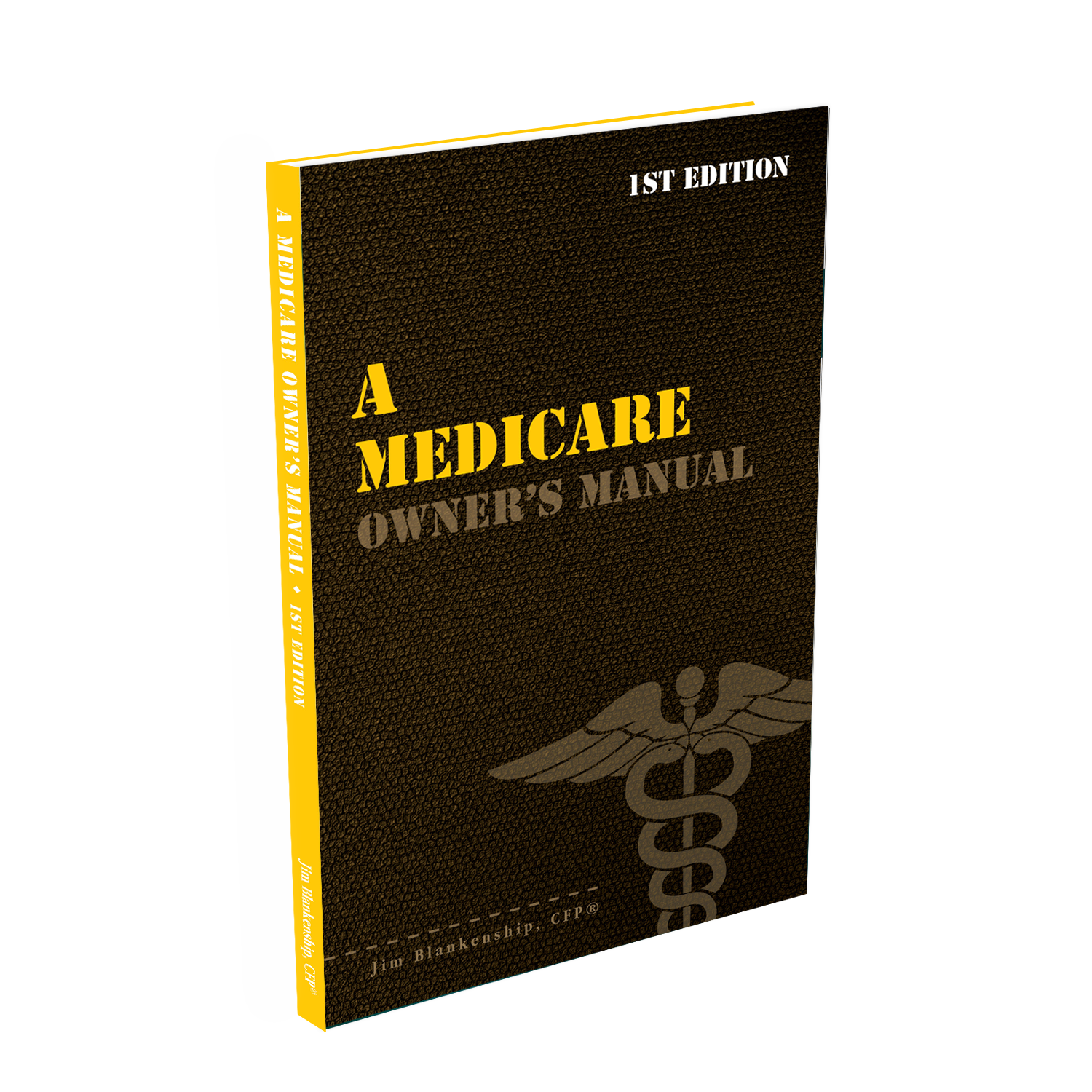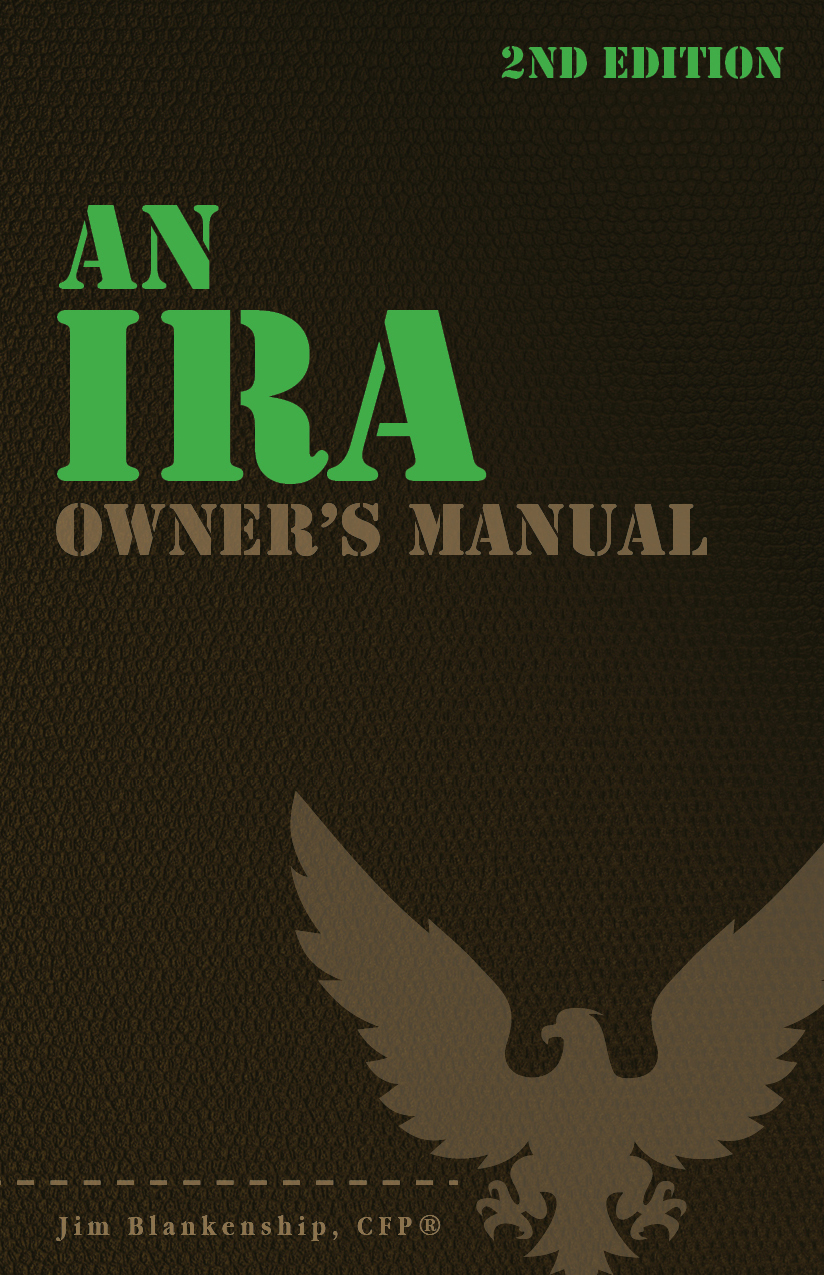January 1, 2013 update: Passage of the American Taxpayer Relief Act of 2012 has extended the QCD through the end of 2013. See this article for more details. In past tax years (through the end of 2011) there was a provision available that allowed taxpayers who were at least age 70½ years of age to make distributions from their IRAs directly to a qualified charity, bypassing the need to include the distribution as income. The law allowed the taxpayer to use a distribution of this nature to satisfy Required Minimum Distributions (RMDs) where applicable. This law expired at the end of 2011, but in years past Congress has acted very late in the year and retroactively reinstated this provision. For more detail on how this provision (if not reinstated) can impact your taxes, see the article Charitable Contributions From Your IRA – 2012 and Beyond. Guidance For 2012 If you […]
IRA
IRS Cracking Down on IRA Rules
It seems that some of the rules the IRS has put in place with regard to IRAs have not always been watched very closely – and the IRS is stepping up efforts to resolve some of this. According to the article in the WSJ, IRA Rules Get Trickier, an estimated $286 million in penalties and fees were uncollected for 2006 and 2007 tax years’ missed distributions, over-contributions, and the like. The title of the article is a bit misleading, because the rules are not changing or getting “trickier”, the IRS is just going to be paying closer attention to what you’re doing with your account. This is set to begin by the end of this year, after the IRS delivers their report to the Treasury on how to go about enforcing the rules more closely. The first rule being monitored more closely is the contribution rule – for 2012, you’re […]
RMDs Don’t Have to Be Taken in Cash
But… It’s a little-known fact that distributions from an IRA or a Qualified Retirement Plan can be taken in kind, rather than in cash. You can in any circumstance take distribution from the account of stocks, bonds, or any investment that you own, just the same as if it were cash. The downside to this is determining valuation for the distribution. You could value the distribution on the day of the distribution by opening price, closing price, average price, or mean between the day’s high and low prices. Where you really get into trouble is when the security that you own is very thinly-traded, such as a small company or very infrequently-traded bonds. These can be very hard to value on the date of distribution, and as you might recall, the value of a distribution for Required Minimum Distributions (RMDs) must be valued appropriately in order to ensure that the […]
What Is Net Unrealized Appreciation?
We’ve discussed how to utilize the Net Unrealized Appreciation (NUA) treatment of distributions from your qualified retirement plan (also known as QRP, meaning 401(k), 403(b), and other plans) – one of the earlier articles on Net Unrealized Appreciation can be found at this link. Even though the process is explained in the earlier article, we didn’t discuss just what exactly can be treated with the NUA option. How do you determine what part of the distribution can be treated with capital gains treatment? In order to determine what is to be treated as unrealized appreciation, we need to define what has to be treated as ordinary income from such a distribution. Briefly, the way that the NUA option works is that you take a complete distribution of your QRP account within one tax year – and you have the option to treat a portion of your account distribution with capital […]
What If My Employer Doesn’t Match My 401(k) Contributions?
Should I continue to make contributions to my 401(k)? Is there something else that I should make contributions to instead? As you may recall, the recommended order for retirement savings contributions is normally as follows: 401(k) contributions up to the amount that the company matches max out your Roth or traditional IRA contributions for the year (as applicable) max out the remainder of the available 401(k) contributions make taxable investment contributions In the situation where your employer doesn’t match your contributions to a 401(k) plan, the order of contributions is more appropriate if you bump up the Roth or traditional IRA contributions. In other words, just eliminate the first bulletpoint. Now, the choice of Roth IRA versus the traditional IRA for your contributions is dependent upon your income and the tax impacts. For example, you would not be eligible to make a deductible traditional IRA contribution if your Modified Adjusted […]
Ideal Roth Conversion Candidate – Protecting Non-Taxation of SS Benefits
This is the second in a series of posts about Ideal Roth Conversion Candidates. See the first post, Low or Zero Tax, at this link. One of the planning options that most all folks have available to them is the Roth IRA Conversion. For the uninitiated, a Roth IRA Conversion is a transaction where you move money from a Traditional IRA or a Qualified Retirement Plan (QRP) such as a 401(k) into a Roth IRA. With this transaction, if any of the funds in the original account was pre-tax, that amount would be included in income as potentially taxable in the year of the Conversion. As you might expect, making a decision like this can result in a considerable tax impact, depending on the individual circumstances. A Roth IRA Conversion may make a great deal of sense for one individual, while another may decide that the Conversion cost is too […]
Ideal Roth Conversion Candidate – Low or No Tax
One of the planning options that most all folks have available to them is the Roth IRA Conversion. For the uninitiated, a Roth IRA Conversion is a transaction where you move money from a Traditional IRA or a Qualified Retirement Plan (QRP) such as a 401(k) into a Roth IRA. With this transaction, if any of the funds in the original account was pre-tax, that amount would be included in income as potentially taxable in the year of the Conversion. As you might expect, making a decision like this can result in a considerable tax impact, depending on the individual circumstances. A Roth IRA Conversion may make a great deal of sense for one individual, while another may decide that the Conversion cost is too great for the result. Detailed below is one specific circumstance that indicates a Roth IRA Conversion is a good move – although each individual needs […]
What is Meant by Half Years of Age?
If you’ve paid much attention to the rules around retirement plans (IRAs, 401(k)s, and others), you’ve probably noticed that there are a couple of rules that refer to ages that include “½”. So what does this mean?? Well, quite literally, this means 6 months after you reach a certain age. The two primary ages with “½” included are 59½ and 70½. So, to be age 59½, means that you reached your 59th birthday six months prior to that date. Likewise, to be age 70½ means that you reached age 70 six months prior to that date. These two ages are for different purposes and are (naturally) treated differently. Age 59½ The rule using age 59½ is for one of the exceptions to the penalty for early withdrawals from your IRA or 401(k) plan: once you’ve reached that age (and not before that age) you can take withdrawals from your IRA […]
Inherited IRA Multiple Beneficiary Example
I thought it might be helpful to work through an example of an IRA that has been inherited by multiple beneficiaries, so that we can discuss the important components of working with such a situation. In our example, we’ll say there is an IRA worth $800,000 at the date of death of the original owner, and she has designated four beneficiaries of the account. One of the first factors that is important to note is that the beneficiaries could be anyone – they do not have to be related to the original owner, or likewise they could be the children, grandchildren, nieces, nephews, brothers or sisters of the original owner. For the purpose of this example though, none of the beneficiaries is the surviving spouse of the original owner – surviving spouses have different rules to work from. Option 1 – Do Nothing The beneficiaries of the original account could […]
What Options Are Available for a Surviving Spouse Who Inherits an IRA?
First Spouse Program bronze medal (Photo credit: Wikipedia) When the owner of an IRA dies and leaves the IRA to his or her spouse as the sole beneficiary, there are some unique options available for handling this inherited IRA. Keep in mind that these options are only available to a spouse a beneficiary – a non-spouse beneficiary has much more limited options available. Options for a Spousal Beneficiary of an IRA The first and easiest option is for the spouse to leave the IRA exactly where it is and do nothing. In this manner, the IRA will continue to exist as belonging to the deceased spouse – for a time. If the deceased spouse was over age 70½ years of age and subject to Required Minimum Distributions (RMDs), the surviving spouse could elect to continue receiving those RMDs using his or her late spouse’s lifetime as the distribution factor. On […]
When Is a Roth IRA Subject to Income Tax?
Elaine Roth (Photo credit: Wikipedia) Ah, the Roth IRA. That single bastion of non-taxable money in our arsenal of accounts. When you have investments in a Roth IRA, you can take the money out tax-free, right? Not always. There are several situations where a Roth IRA’s monies can be subjected to tax, penalty, or both. Listed below are some of those circumstances. When a Roth IRA is Taxable It should be noted that contributions to a Roth IRA may always be withdrawn from the account tax-free, for any purpose whatsoever. There are no restrictions on these withdrawals. 1. Taking the money out of the account within the first five years of the account’s existence can result in taxation of a portion of the funds. The portion that is taxable is any withdrawal that exceeds the total of all contributions and conversions into the account. This rule applies without exceptions. 2. […]
About to Graduate? Learn How to Save!
Hey, soon-to-be-graduates: as you begin to make your way out into the world of full-time employment, you’ll soon be faced with many, many “grown up” ways to spend the money you’ll be earning. You’ll of course have rent, insurance, food and clothing, maybe a car payment, and you’ll want to use some of that new-found money to blow off steam, however you choose to do that – maybe fulfilling a lifetime dream of getting “beaked” by Fredbird, for example. If you’re on top of your game, you’ll may also be thinking about saving some of your earnings. Here, you’ll have a bundle of options to choose from – regular “bank” savings accounts, 401(k) plan (or something similar) from your employer, and IRA accounts, both the traditional deductible kind and the Roth kind (hint: the Roth kind is what I want you to pay particular attention to). Side note: even if […]
End of Year Roth Conversion Strategy: Fill Up the Bracket
Image by agrilifetoday via Flickr If you’re in a relatively low tax bracket and have funds in a traditional IRA or Qualified Retirement Plan, chances are you might be in a position to set yourself up with tax-free income via a Roth Conversion. One method that can work in your favor is the “fill up the bracket” technique, and if you want to do this for 2011, you’re running out of time, it must be done by December 30 (December 31 is a Saturday). The way this works is that you determine what your regular income is, and then look at where you are with regard to your tax bracket. If there’s still some “headroom” in the current bracket, you could convert an amount, equal to or less than your “headroom”, from your traditional IRA to a Roth IRA. This way you are controlling the tax rate at which your […]
Year End Income Tax Planning
Image via Wikipedia Once you’ve reached the last month of the tax year, there aren’t a lot of things that can be done to minimize your income taxes. But there are a few things that could be done. For example, you could double up your real estate taxes by prepaying next year’s tax during December. Doing this with, for example, a $3,000 per year real estate tax bill could result in a reduction of tax for the year of $750 if you’re in the 25% bracket. Keep in mind though, that you’ll have forked out this money long before it is actually due in most cases, and for the next year you won’t have this deduction available if you used it in this year. The same could be done with your charitable contributions – there’s no reason that you can’t make additional contributions to your favorite charities at the end […]
Roth Conversion/Recharacterization Strategy
Image via Wikipedia 1/1/2018 Note: Recharacterization of Roth conversion is no longer allowed as of tax year 2018. The last tax year that you could recharacterize Roth conversions is 2017. See Roth Recharacterization is No Longer Allowed for more details. If you have an IRA you probably know about the concept of a Roth IRA conversion – where you take distribution of a portion of your IRA and directly transfer that money into your a Roth IRA, paying tax as you go. Then the Roth IRA can continue to grow tax-free (as Roth IRAs do) and you’ll never owe tax on your qualified distributions from the Roth IRA. In addition, if the investments you’ve made in the Roth IRA have lost money, before October 15 of the following year you have the opportunity to recharacterize your Roth conversion. If you didn’t recharacterize, you’d be paying tax on a conversion amount […]
Re-Converting Your IRA
Image by accent on eclectic via Flickr Okay, so we’ve covered Roth Conversions – where you distribute the funds from your traditional IRA to a Roth IRA. Then we covered Recharacterizations – where you can “undo” the conversion by moving all or part of the converted funds and the earnings associated with it back into a traditional IRA. The end result is that, for those funds converted and recharacterized, from the eyes of the IRS, nothing happened to the account (except that you may have put the money back into a different IRA). So, if you went through a Roth Conversion and then Recharacterized it, the assumption is that you wish to eventually re-convert those funds to a Roth account. When are you allowed to do this? There are two limits on the Re-Conversion of funds to a Roth account once they’ve been through the Conversion/Recharacterization wringer: This first limit […]
The Roth Recharacterization
1/1/2018 Note: Recharacterization of Roth conversion is no longer allowed as of tax year 2018. The last tax year that you could recharacterize Roth conversions is 2017. See Roth Recharacterization is No Longer Allowed for more details. After all the hoopla around Roth conversions in 2010, now is the time to consider whether or not a recharacterization is in your future. So what is a recharacterization, and how does it work? Recharacterization is the “backing out” of your Roth conversion. In other words, you can literally make the conversion as if it had never been done at all, with your money back in the traditional IRA where it started. Why would you want to do that? Here’s an example: let’s say you converted $100,000 to a Roth IRA in 2010 and you are ready to pay the tax on your 2010 return (you elected out of the spread to 2011 […]
2011 IRA MAGI Limits – Married Filing Separately
Note: for the purposes of IRA MAGI qualification, a person filing as Married Filing Separately, who did not live with his or her spouse during the tax year, is considered Single and will use the information on that page to determine eligibility. For a Traditional IRA (Filing Status Married Filing Separately): If you are not covered by a retirement plan at your job and your spouse is not covered by a retirement plan, there is no MAGI limitation on your deductible contributions. If you are covered by a retirement plan at your job and your MAGI is less than $10,000, you are entitled to a partial deduction, reduced by 50% for every dollar (or 60% if over age 50), and rounded up to the nearest $10. If the amount works out to less than $200, you are allowed to contribute at least $200. If you are covered by a retirement […]
2011 MAGI Limits for IRAs – Married Filing Jointly or Qualifying Widow(er)
Note: for the purposes of IRA MAGI qualification, a person filing as Married Filing Separately, who did not live with his or her spouse during the tax year, is considered Single and will use the information on that page to determine eligibility. For a Traditional IRA (Filing Status Married Filing Jointly or Qualifying Widow(er)): If you are not covered by a retirement plan at your job and your spouse is not covered by a retirement plan, there is no MAGI limitation on your deductible contributions. If you are covered by a retirement plan at work, and your MAGI is $90,000 or less, there is also no limitation on your deductible contributions to a traditional IRA. If you are covered by a retirement plan at your job and your MAGI is more than $90,000 but less than $110,000, you are entitled to a partial deduction, reduced by 25% for every dollar […]


 Sterling Raskie, MSFS, CFP®, ChFC®
Sterling Raskie, MSFS, CFP®, ChFC® The latest in our Owner’s Manual series, A 401(k) Owner’s Manual, was published in January 2020 and is available on
The latest in our Owner’s Manual series, A 401(k) Owner’s Manual, was published in January 2020 and is available on  A Medicare Owner’s Manual, is updated with 2020 facts and figures. This manual is available on
A Medicare Owner’s Manual, is updated with 2020 facts and figures. This manual is available on  Social Security for the Suddenly Single can be found on Amazon at
Social Security for the Suddenly Single can be found on Amazon at  Sterling’s first book, Lose Weight Save Money, can be
Sterling’s first book, Lose Weight Save Money, can be  An IRA Owner’s Manual, 2nd Edition is available for purchase on Amazon. Click the link to choose the
An IRA Owner’s Manual, 2nd Edition is available for purchase on Amazon. Click the link to choose the  Jim’s book – A Social Security Owner’s Manual, is now available on Amazon. Click this link for the
Jim’s book – A Social Security Owner’s Manual, is now available on Amazon. Click this link for the  And if you’ve come here to learn about queuing waterfowl, I apologize for the confusion. You may want to discuss your question with Lester, my loyal watchduck and self-proclaimed “advisor’s advisor”.
And if you’ve come here to learn about queuing waterfowl, I apologize for the confusion. You may want to discuss your question with Lester, my loyal watchduck and self-proclaimed “advisor’s advisor”.